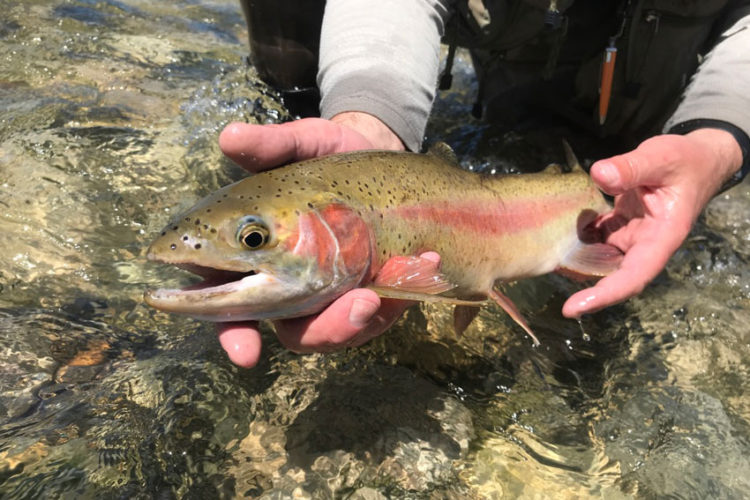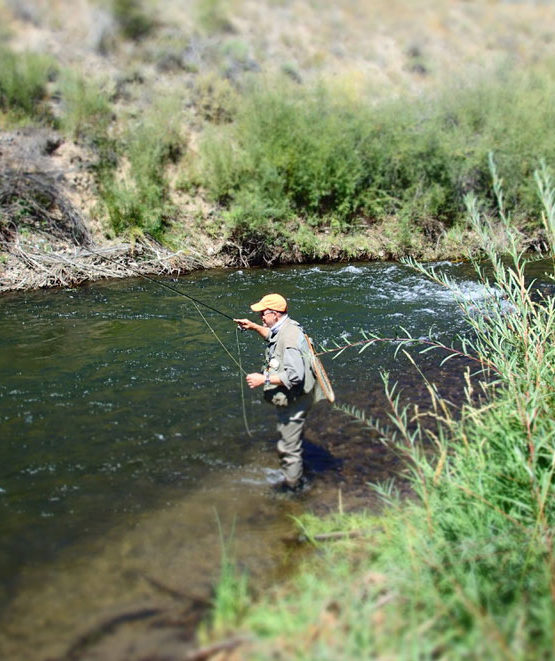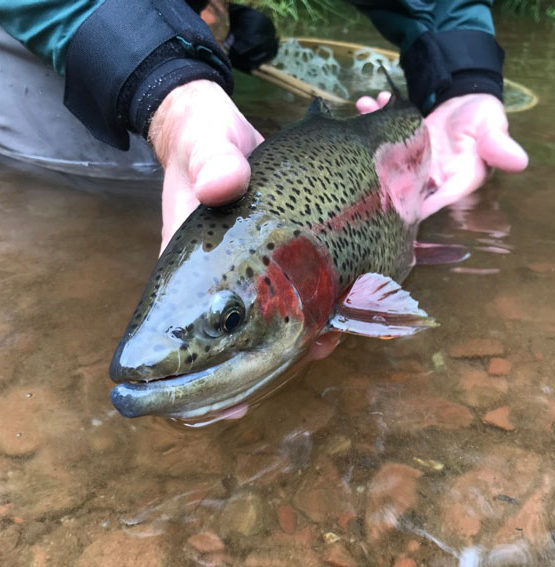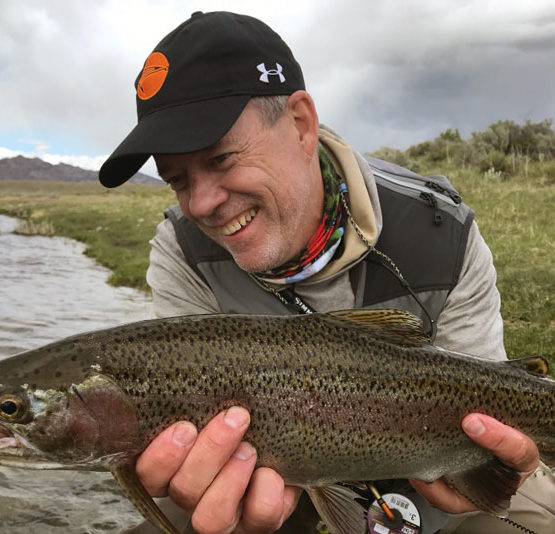From assisting in depth control, to identifying subtle takes deep beneath the surface, strike indicators play a very important role in fly fishing. But, like everything else in fly fishing, there are multiple ways of doing things. So, the question is, do you need a strike indicator?
No, you do not need to use a strike indicator. This is known as “naked nymphing”, and at times, it may actually increase your odds of catching a fish. In particular, you should consider removing your indicator when you are fishing shallow water, stillwater, or sight-casting to fish feeding beneath the surface.
If you have never attempted fly fishing without an indicator, there are a few things you should probably know. So, stick with me, because that’s what I’m going to cover for the rest of this post.
Disclaimer: This post may contain affiliate links, meaning we will receive a small commission (at no cost to you) if you click through and make a purchase.When To Fish Without A Strike Indicator
Fly fishing without an indicator is a risk/reward kind of situation. Sure, you may not be able to identify strikes as clearly, but on the other hand, if you put an indicator on your line, you might not get any strikes at all.
As an angler, if your goal is to catch fish, then it’s important that you understand and recognize when that risk is worth the potential reward. So, to make things a little easier on you, here are a few situations when you might want to remove your indicator, and try some old-school, wax-on-wax-off style nymphing.
Sight-Casting
As I mentioned at the beginning of this article, if you are sight-casting a nymph rig to fish feeding beneath the surface, then there is absolutely no reason for you to use an indicator. In fact, you shouldn’t make a single cast until you remove it from your line.
Sight-casting is all about making a good, gentle presentation so that you don’t startle the fish, and watching the fish itself — two things that make a strike indicator less than useless.
Clear Water
If you are fishing gin-clear water, and you can see the fish, then odds are they can see you. So, what do you think they will do when they see an orange bubble smack the surface?
Well, let me tell ya!
At best, they’ll scatter and hide — which at least lets you know you should remove your indicator. At worst, they’ll just press pause on feeding, and laugh while you unsuccessfully cast to them for hours like a complete idiot.
Think about it like this: if you went out for a nice steak dinner, and every time you went to take a bite, the chef threw a basketball at your table, would you continue to eat there? Well, when you fish with an indicator in clear water, that’s pretty much what you are doing to the fish.
Related Content:
- How Much Should You Tip A Fishing Guide?
- How Often Should You Clean Your Fly Line?
- 10 Baetis Nymph Patterns You Need To Try
- 9 Killer Nymphing Tips For Beginners
- How To Keep Dry Flies From Sinking: 5 Simple Tips
Slow Water
If you are ever fishing slow-moving water — or even stillwater — and the fish aren’t showing you any love, then you might just need to get rid of your indicator.
In slow water, fish don’t have to make decisions as quickly as they do in fast water. So, if something doesn’t look or feel right about your rig — for instance, your bright indicator floating on the surface — they will steer clear. Sometimes, you just need to shake things up.
Skittish Fish
I don’t care if you’re fishing clear water, muddy water, shallow water, deep water, or toilet water, if you are casting to skittish fish, then your indicator should be one of the first things to hit the chopping block. I mean, you want to catch fish, right?
Well, eliminating that little splash your indicator makes could be the difference between a day of netting fish, and a day of struggle.
Deep Water
One of my favorite aspects of fishing with an indicator, is that it gives you a little extra depth control. Unlike adding and removing weights, if you have an indicator that can restrict the maximum depth your nymphs will sink, you can really zone-in on where the fish are feeding.
However, that can cause a serious problem when you are fishing deep water. If you have an indicator restricting your depth, you may be missing the opportunity to catch the big ol’ fish hanging out at the bottom.
So, in situations where you can’t see the bottom of the river or lake you are fishing, do yourself a favor and remove your indicator. You may find that the depth restriction your indicator was providing, was only restricting your ability to catch fish.
High-Sticking
I absolute love high-stick nymphing small streams and pocket water. There’s just something so fun about dropping a nymph into a little pool of rushing water and watching a small trout hammer it. The other great thing about this method of fishing, is that you really don’t need a strike indicator.
I mean, when you’re holding your rod-tip high enough that your fly line doesn’t touch the water, it’s pretty easy to feel when a fish hits your fly. If anything, an indicator is just an over-complication of this process. So, don’t be afraid to ditch it whenever you are high-sticking.
Identifying Strikes Without An Indicator
There’s no doubt that fly fishing without an indicator is a slightly more advanced technique. So, if you are new to fly fishing, you may still stand a better chance of catching fish if you use one. But, if you are ready to take the next step, and take your fly fishing skills to a whole new level, here are a few tips for spotting a strike without an indicator.
Watch For Movement
If you are sight-casting without an indicator, then the first sign of a strike is movement from the fish you are targeting. In other words, if you are casting to a fish, and you see it move a couple inches to one side or the other at approximately the same time you expect your fly to be drifting by, then it’s probably a strike. So, give your rod a gentle flick to see if the fish is on. Otherwise, just cast again.
Watch The End Of Your Fly Line
If you’re fishing without an indicator, you can just watch the end of your fly line. Like an indicator, your line will twitch and move if a fish takes your fly, so this can be a good alternative in a pinch. Though, I only recommend this option if you are fishing deep water. If you choose to watch your fly line in shallow water, there will be too much of a delay from the time a fish hits your fly to the time your fly line twitches; which leads to missed takes, and frustration.
Fish By Feel
The most obvious way to identify a strike without an indicator, is when you feel the wriggle of a fish on your line. This is the least reliable option, because some takes are too subtle to feel, but sometimes you don’t really have a choice.
If you have to fish by feel, try to keep a slight amount of tension in your line. This will increase your sensitivity to fish that hit your fly, and help you catch more fish.
Bottom Line
You don’t always need to use an indicator. In fact, fishing without an indicator is a great option in many circumstances. So, if you want to increase your angling success, you should add this technique to your fly fishing repertoire.
Hey, did you know that you can receive Fly Fishing Fix posts, tips, updates and recommendations directly in your inbox? Just subscribe to our email list, and join our awesome club!
Join Fly Fishing Fix, Today!










